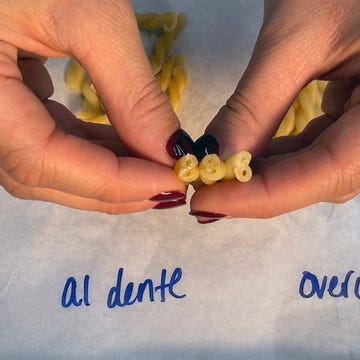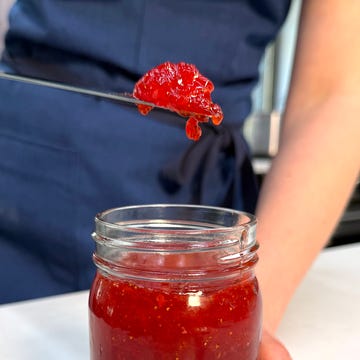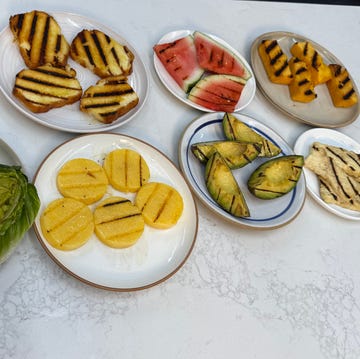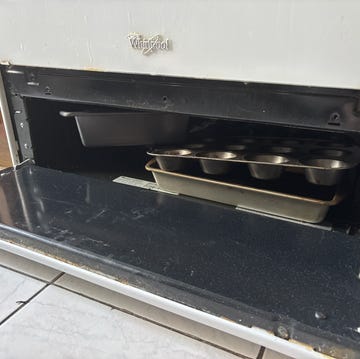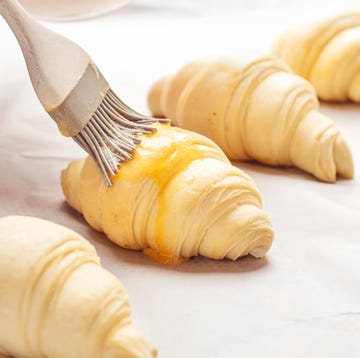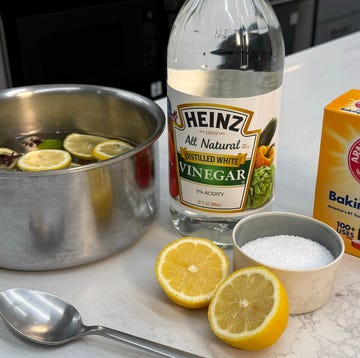It’s just about impossible to imagine cooking (life, perhaps?) without garlic. Garlic is a culinary powerhouse, lending itself as the base to countless recipes. Depending on how it’s cut, the allium can be sharp and pungent or sweet and mellow. I appreciate its forgiving, softer side, though sometimes I like to bring out its more in-your-face nature (a must for garlic bread). I cook with garlic all the time—Italian cuisine is my specialty—so I know a thing or two about putting those cloves to work. From using garlic whole to smashing it into a paste, there are so many ways to slice (or chop or grate) the allium—and each technique works best for different cooking applications. Let's break it down.
Whole Garlic
If you’re like me, you love digging your spoon through any sauce or soup to find those hidden, melt-in-your-mouth cloves. (Or even better, picking deeply caramelized cloves straight off the sheet pan while your roast chicken rests.) Whole cloves are ideal for long, slow braises or high-heat roasts; they hold up during long cooking applications. Another great way to use whole garlic is by cooking it slowly in olive oil, confit-style; it's perfect for spreading on toast.
Smashed Garlic
If you like biting into large pieces of garlic like me, then this method might be your favorite. It can be used similarly to whole cloves for roasting, simmering into stews, and even when making a frittata. Add peeled, smashed cloves to a skillet with butter and thyme to baste your perfect steak, allowing the release of all of the oily essence of the garlic.
Sliced Garlic
If you like texture and visual appeal, then sliced garlic is the move. There’s no right or wrong way to do this: Go ahead and sauté them in olive oil for a tomato sauce, or gently fry them in oil for crunchy garlic chips. It's a perfect crispy addition to pasta, grain bowls, stir fries, and honestly whatever you want. Use sliced garlic when you want to see pieces in your sauces or taste the textural contrast on top of pasta, like in my Creamy Garlicky Alfredo Ditalini.
Coarsely Chopped Garlic
This is probably the most common approach, and for good reason. Quicker than mincing, coarsely chopped garlic offers a more up-front profile than using whole or smashed cloves. Rather than mellowing out like whole or smashed cloves, chopped garlic will retain most of its bite. Many of our recipes call for coarsely chopped garlic, like minestrone soup.
Minced Garlic
When you’re seeking a pungent, peppery flavor, go for minced garlic. Minced and finely chopped garlic are often used interchangeably; both terms refer to smaller pieces than a coarse chop. Minced garlic works well in stir fries, baked veggie dishes (Baked Feta Chickpeas where ya at!), stewy sandwiches like a sloppy joe, or in the butter sauce drizzled over this cheesy garlic pull-apart bread. Use minced garlic as an assertive supporting character for recipes that need a little nuance.
Grated Garlic
One of my personal favorite ways to use garlic is by grating it. It avoids a sticky mess on the cutting board, and you can use a microplane to grate away right into the bowl, sauce, or pot of soup or dip. Fair warning—since you are rupturing more of garlic’s cells, the flavor is quite intense. (A little goes a long way.)
Garlic Paste
Garlic paste is probably one of the more potent ways to prepare garlic. If you really want that unmistakable pungency (for example, for a marinade, sauce, dressing, or aioli), garlic paste will give you all you need. Mince the garlic first, sprinkle with a pinch of salt (which acts as an abrasive), and use the side of your knife, pushing the knife back and forth on the board until it becomes sticky.








